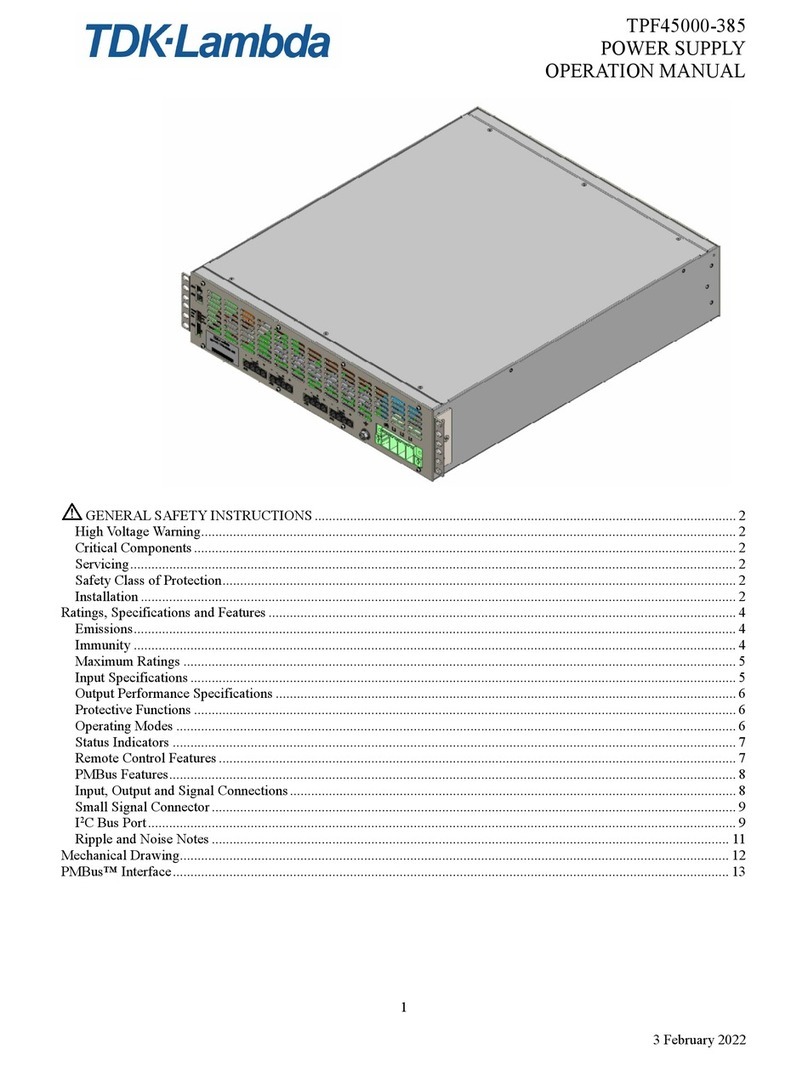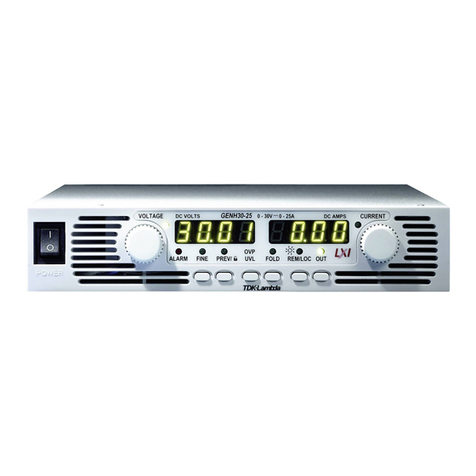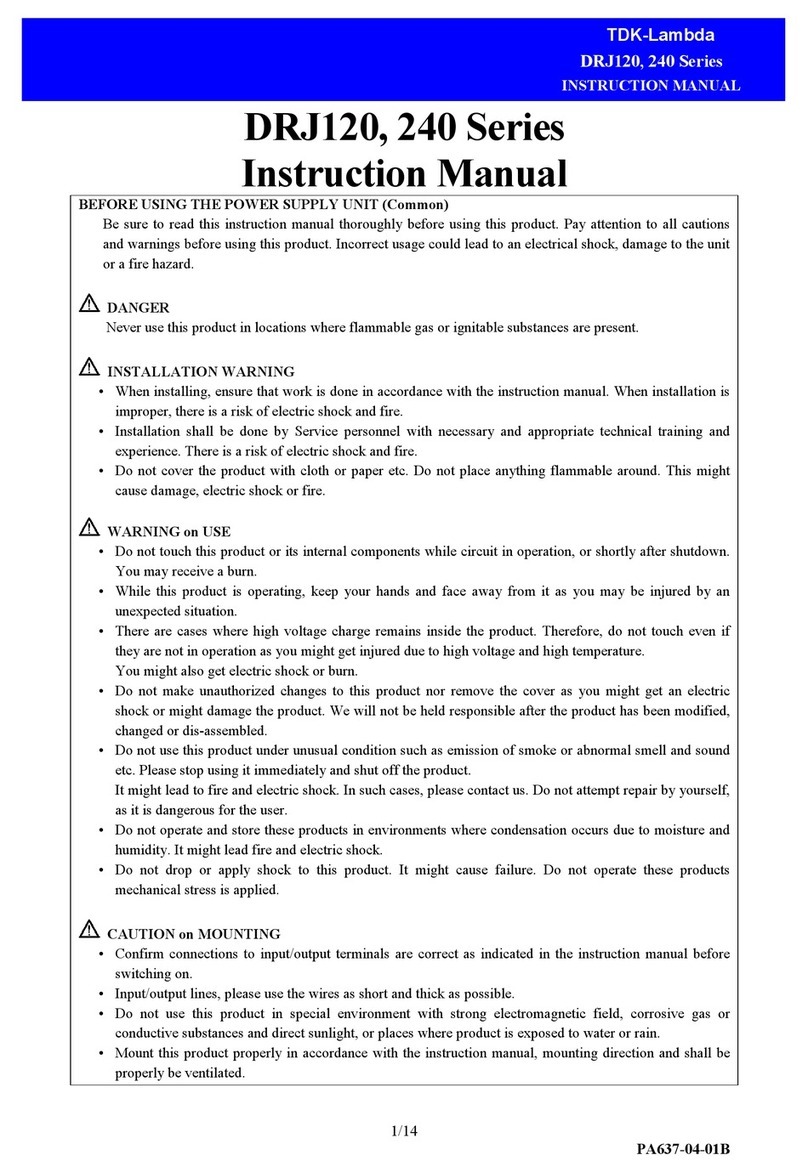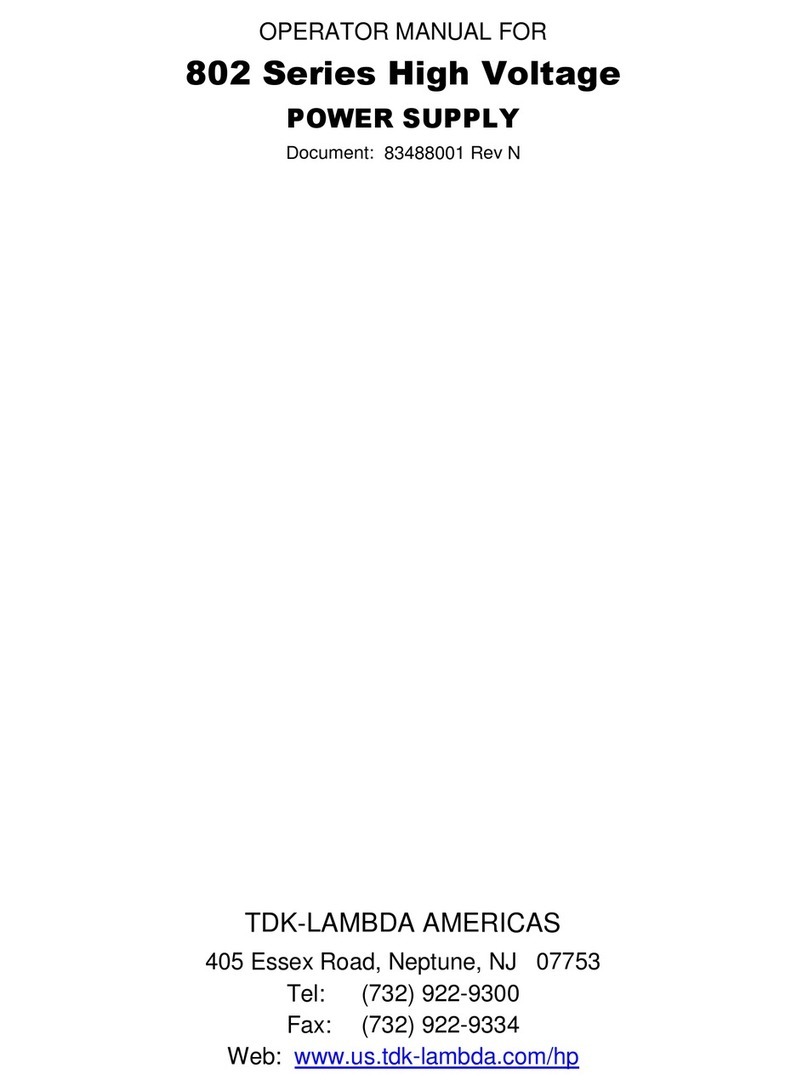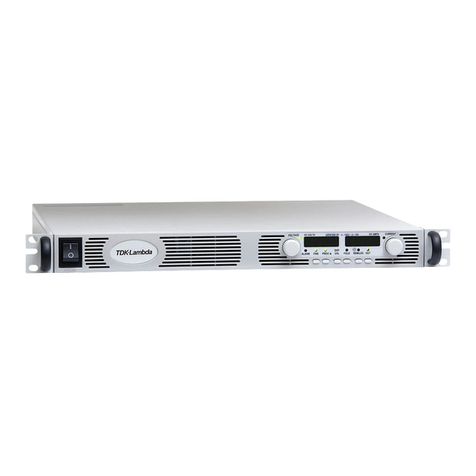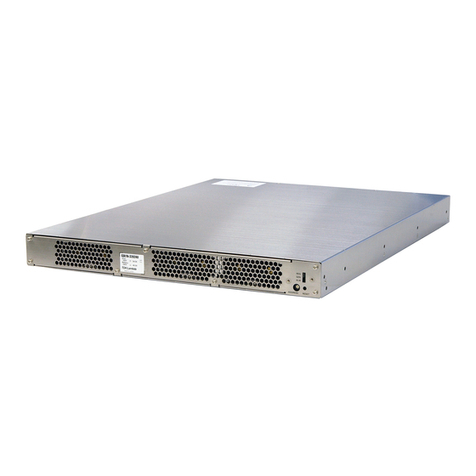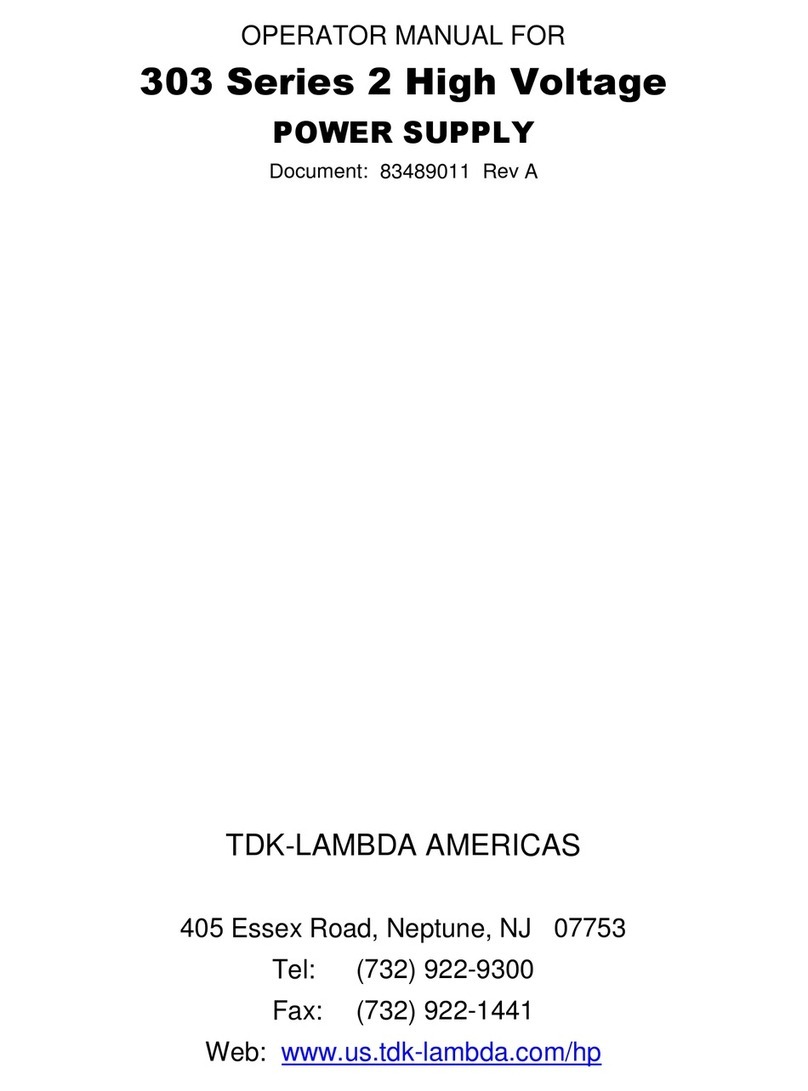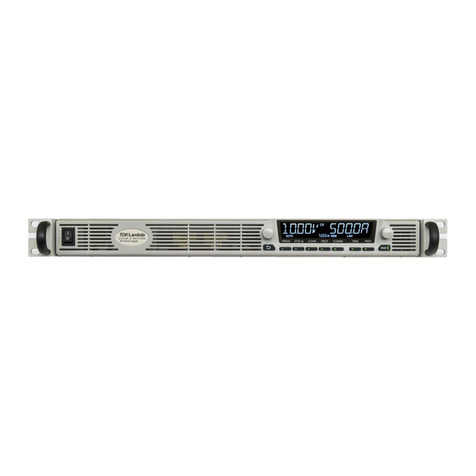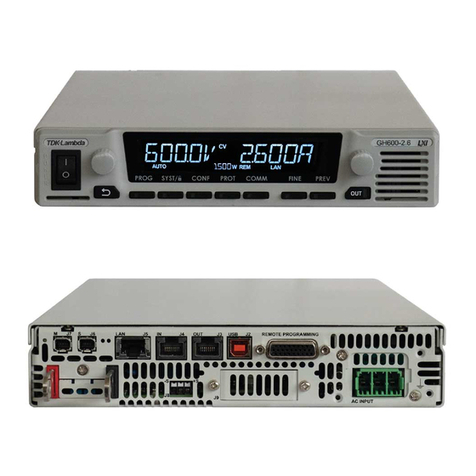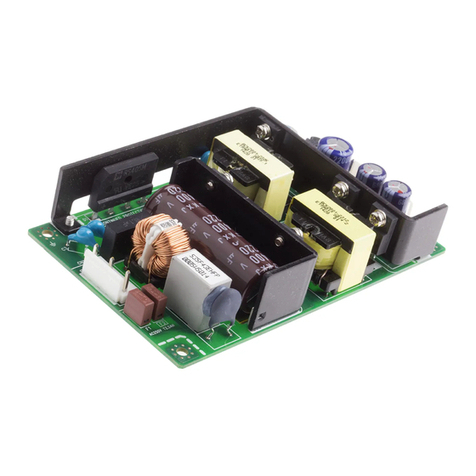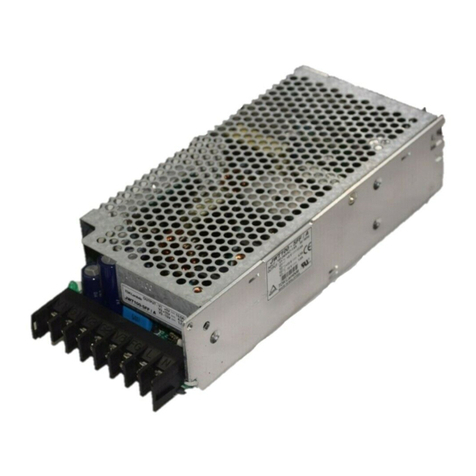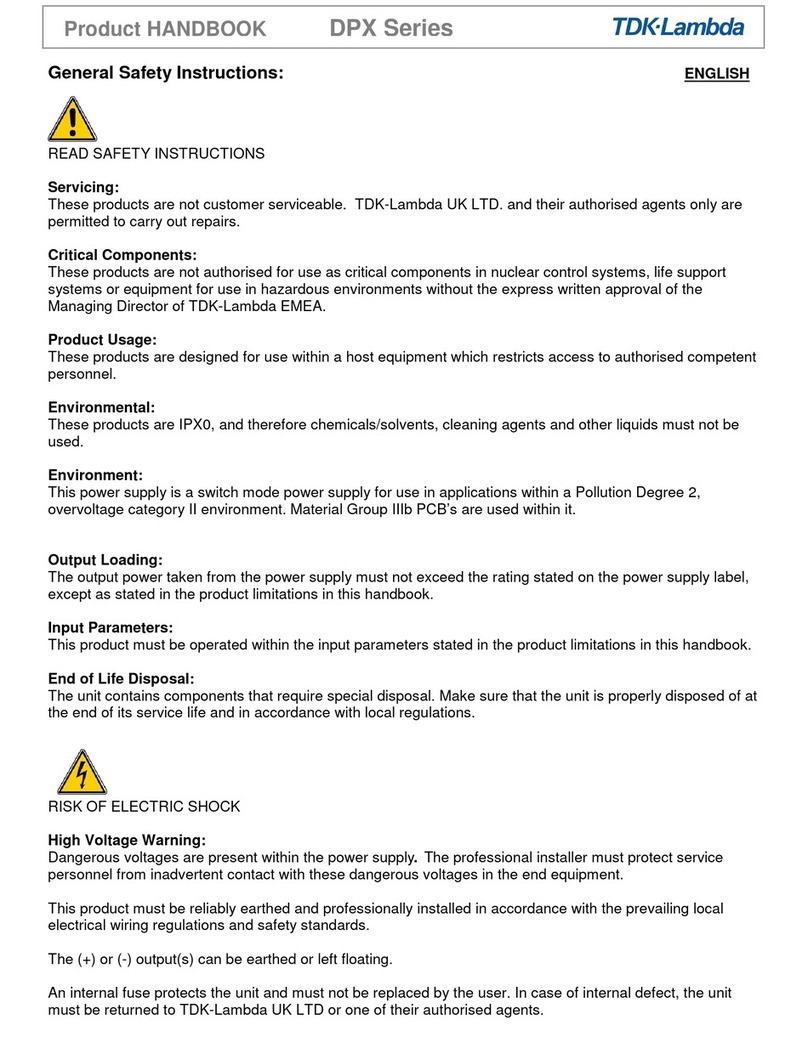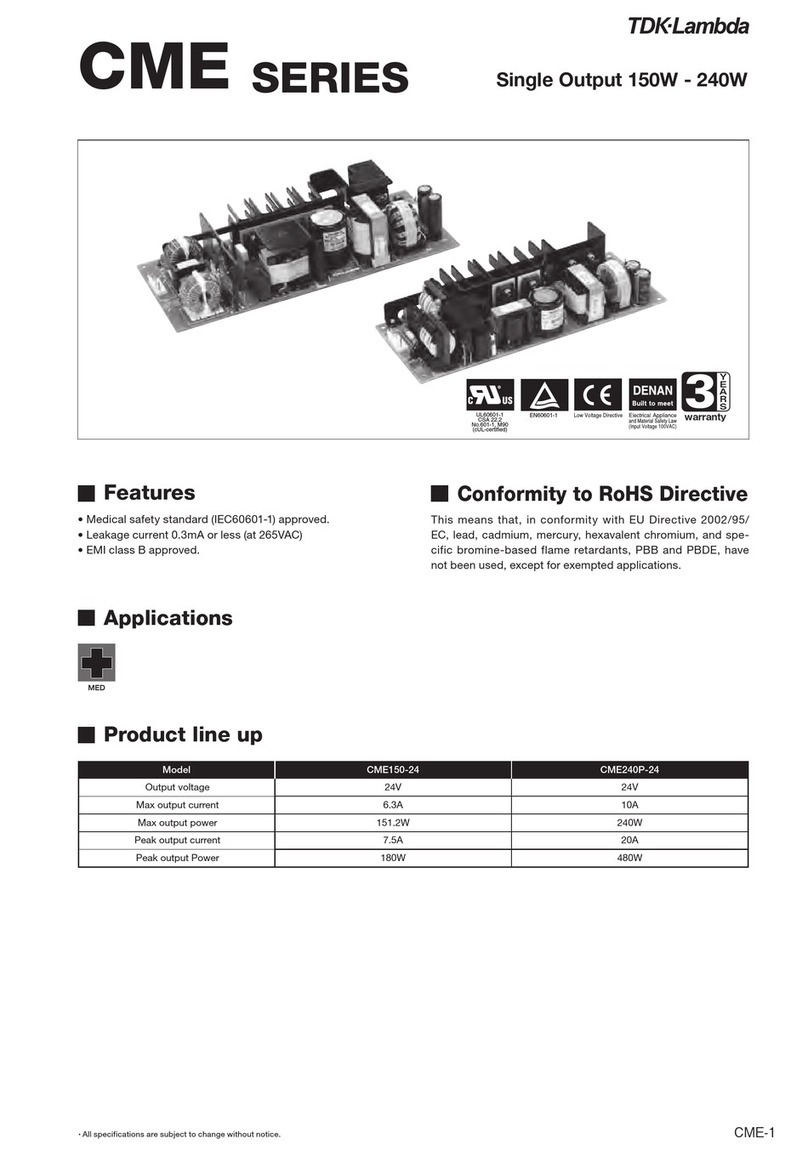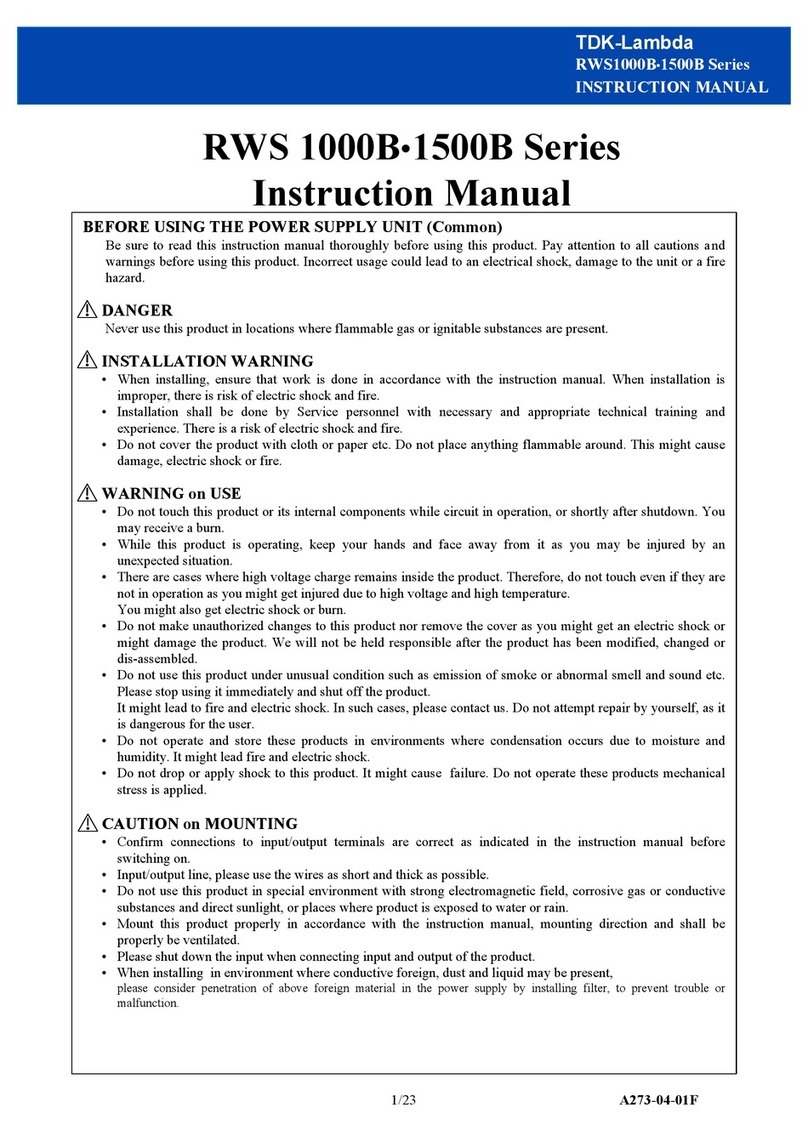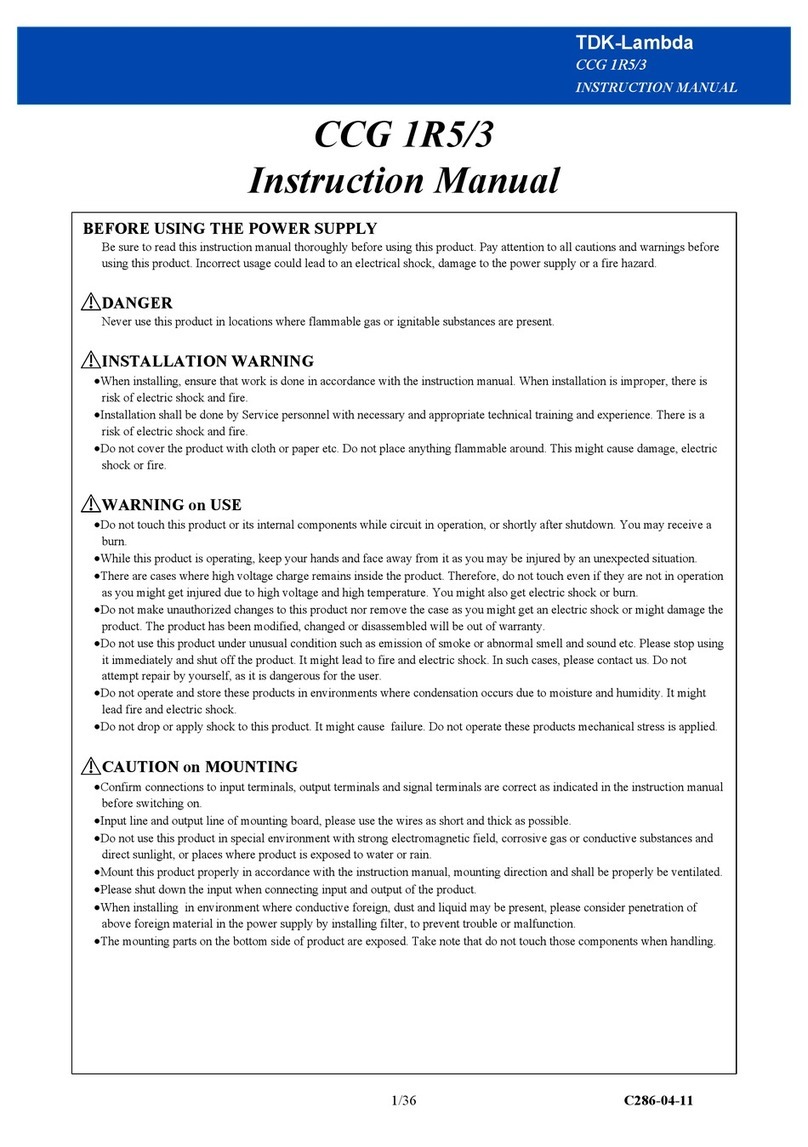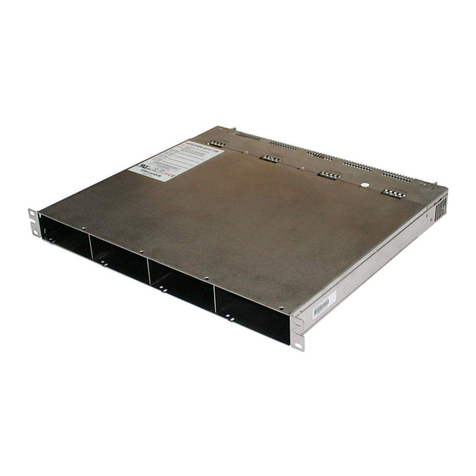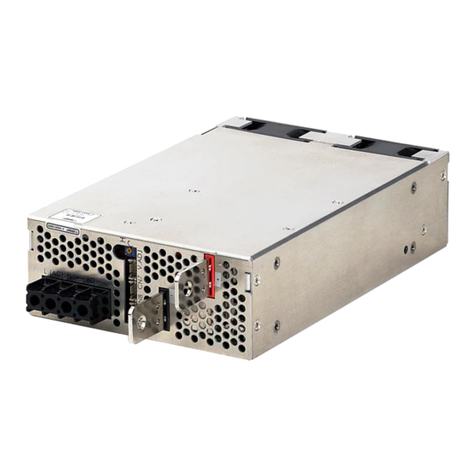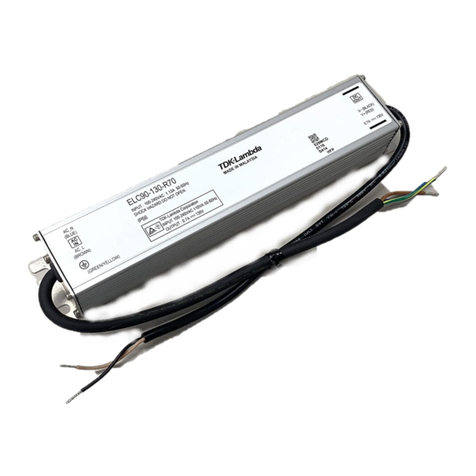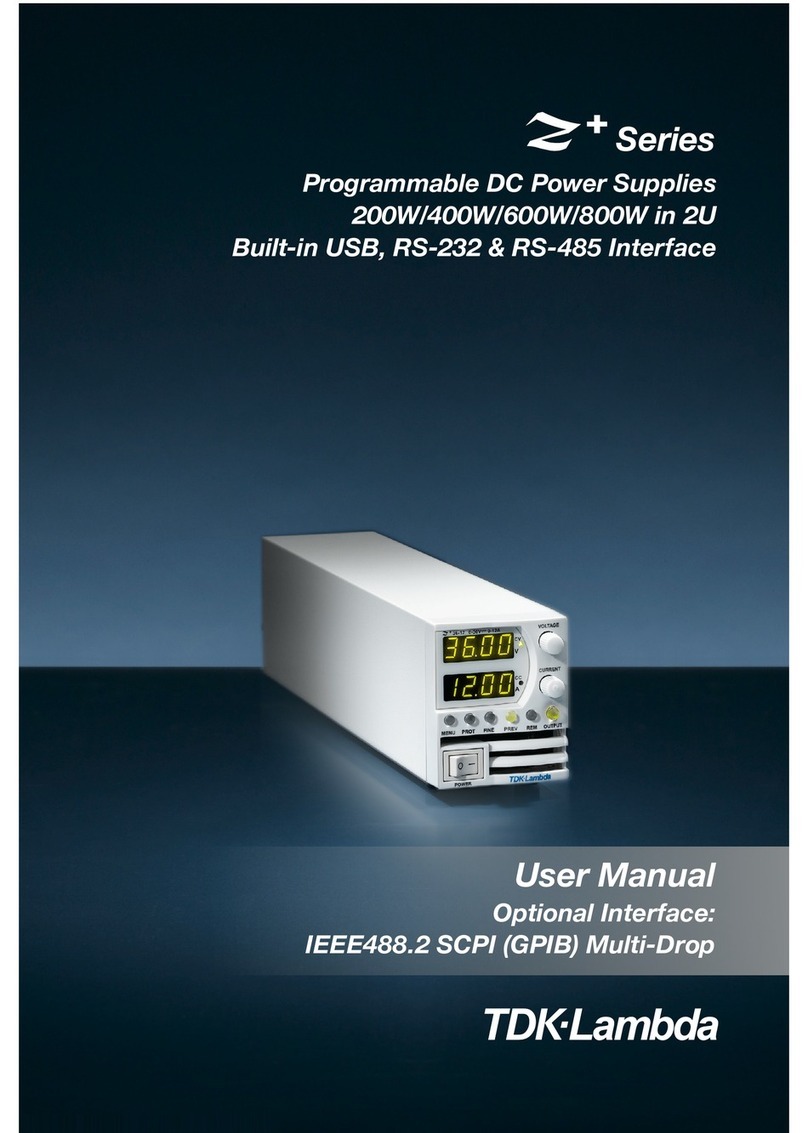
0 Rev. 2.0 June 11, 2018
PFH500F-28-xxx Series
Instruction Manual
BEFORE USINGTHE POWER SUPPLY UNIT
Be sure to read and understand this instruction manual thoroughly before using this product. Pay attention to all cautions and
warnings before using this product. Incorrect usage could lead to an electrical shock, damage to the unit or a fire hazard.
DANGER
Never use this product in locations where flammable gas or ignitable substances are present. There are risks of igniting these
substances and exploding by an arcing.
WARNING
Do not touch this product or its internal components while circuit is live, or shortly after shut down.
high voltage or high temperature present and you may receive an electric shock or burn.
While this product is operating, keep your hands and face away from it as you may be injured by an unexpected situation.
Do not make unauthorized changes to this product, otherwise you may receive an electric shock and void your warranty.
Do not drop or insert anything into the product. It might lead to a failure, fire and electric shock.
Do not use this product under unusual conditions such as emission of smoke and/or abnormal smell or audible noise, etc.
It might lead to fire and/or electric shock. In such cases, please contact TDK Lambda. Do not attempt repair by yourself, as it
is dangerous for the user.
Do not operate these products in the presence of condensation. It might lead to fire and electric shock.
CAUTION
This power supply is designed and manufactured for use within an end product such that it is accessible only to trained
SERVICE ENGINEERS.
Confirm that the connections to input/output terminals, and signal terminals are correct as specified in this instruction manual
before turning on the power.
Input voltage, Output current, Output power, ambient temperature, case temperature, and ambient humidity should be kept
within the specifications, otherwise the product may be damaged.
Do not operate and store this product in an environment where condensation might occur. In such case, waterproof treatment
is necessary.
The equipment has been evaluated for use in a Pollution Degree 2 environment.
Do not use this product in environment with a strong electromagnetic field, corrosive gas or conductive substances.
For applications, which require very high reliability, such as nuclear related equipment, medical equipment, traffic control
equipment, etc., it is necessary to provide a fail-safe mechanism in the end equipment.
Do not inject abnormal voltages into the output terminal or signal terminal of this product. The injection of reverse voltage or
over voltage exceeding nominal output voltage into the output terminal or signal terminal might cause damage to internal
components.
Never operate the product under the over-current or short circuit conditions. The failure or other damages may occur.
The output voltage of this power supply unit is considered to be a hazardous energy level (The voltage is 2V or more and the
electric power is 240W or more). It must not be made accessible to users. Protection must be provided for Service Engineers
against indirect contact with the output terminals and/or to prevent tools being dropped across them. While working on this
product, the AC input power must be switched off, and the input, output, +VBus, and -VBus terminal voltages should be at
safe level.
The application circuits and their parameters are for reference only. Be sure to verify effectiveness of these circuits and their
parameters before finalizing the circuit design.
Use a Fast-Blow external fuse to each module to ensure safe operation and compliance with the safety standards to which it is
approved. The recommended input fuse rating within the instructions is as follows: 10A, 250V fast acting fuse. The breaking
capacity and voltage rating of this fuse may be subject to the end use application.
